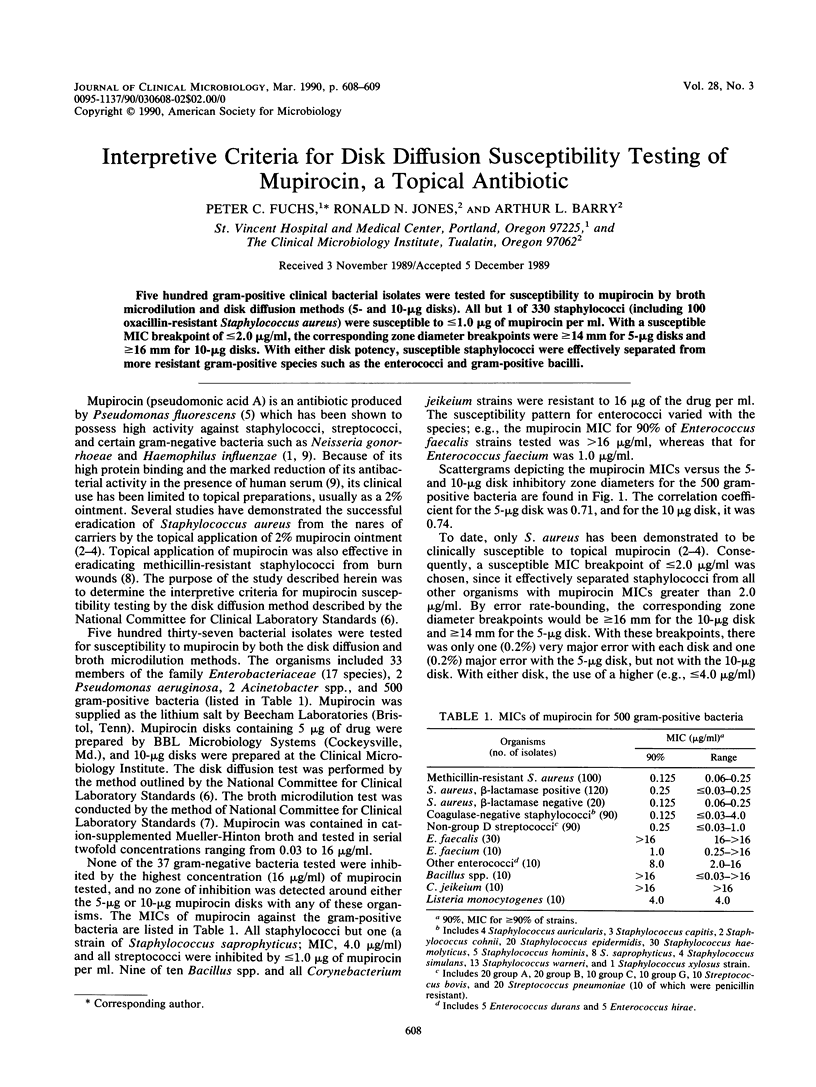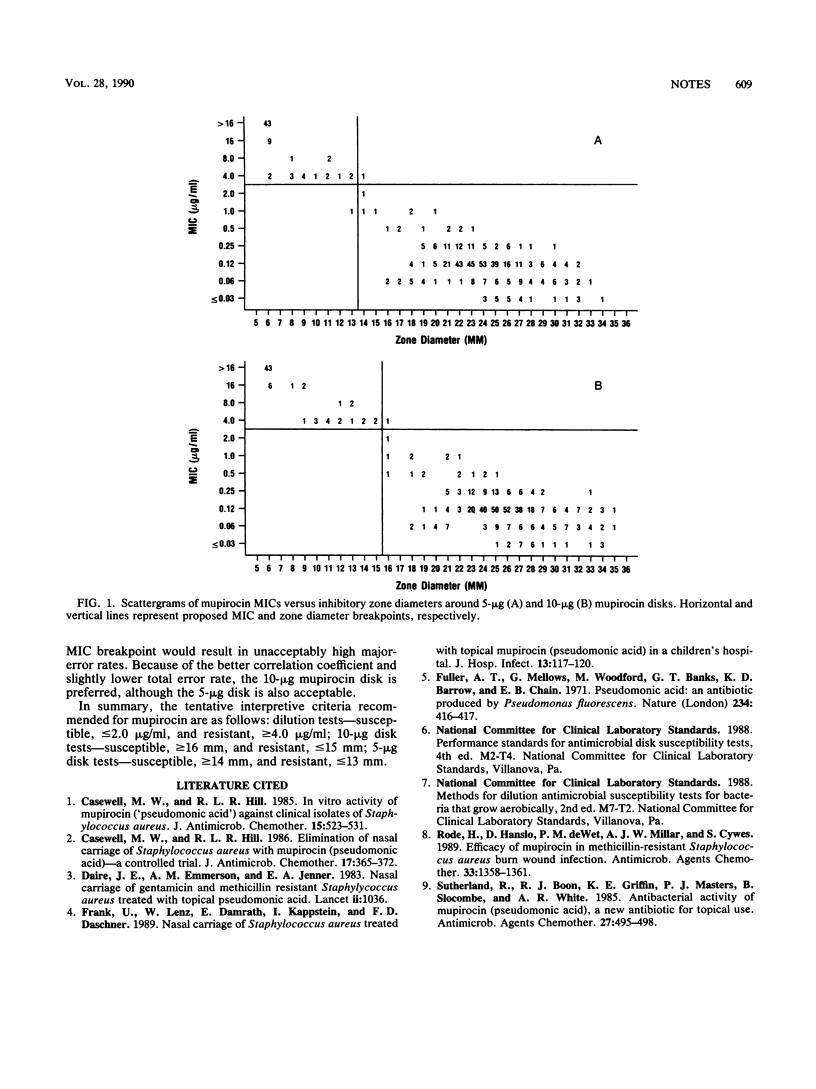Abstract
Five hundred gram-positive clinical bacterial isolates were tested for susceptibility to mupirocin by broth microdilution and disk diffusion methods (5- and 10-micrograms disks). All but 1 of 330 staphylococci (including 100 oxacillin-resistant Staphylococcus aureus) were susceptible to less than or equal to 1.0 micrograms of mupirocin per ml. With a susceptible MIC breakpoint of less than or equal to 2.0 micrograms/ml, the corresponding zone diameter breakpoints were greater than or equal to 14 mm for 5-micrograms disks and greater than or equal to 16 mm for 10-micrograms disks. With either disk potency, susceptible staphylococci were effectively separated from more resistant gram-positive species such as the enterococci and gram-positive bacilli.
Full text
PDF

Selected References
These references are in PubMed. This may not be the complete list of references from this article.
- Casewell M. W., Hill R. L. Elimination of nasal carriage of Staphylococcus aureus with mupirocin ('pseudomonic acid')--a controlled trial. J Antimicrob Chemother. 1986 Mar;17(3):365–372. doi: 10.1093/jac/17.3.365. [DOI] [PubMed] [Google Scholar]
- Casewell M. W., Hill R. L. In-vitro activity of mupirocin ('pseudomonic acid') against clinical isolates of Staphylococcus aureus. J Antimicrob Chemother. 1985 May;15(5):523–531. doi: 10.1093/jac/15.5.523. [DOI] [PubMed] [Google Scholar]
- Dacre J. E., Emmerson A. M., Jenner E. A. Nasal carriage of gentamicin and methicillin resistant Staphylococcus aureus treated with topical pseudomonic acid. Lancet. 1983 Oct 29;2(8357):1036–1036. doi: 10.1016/s0140-6736(83)91029-2. [DOI] [PubMed] [Google Scholar]
- Frank U., Lenz W., Damrath E., Kappstein I., Daschner F. D. Nasal carriage of Staphylococcus aureus treated with topical mupirocin (pseudomonic acid) in a children's hospital. J Hosp Infect. 1989 Feb;13(2):117–120. doi: 10.1016/0195-6701(89)90017-0. [DOI] [PubMed] [Google Scholar]
- Fuller A. T., Mellows G., Woolford M., Banks G. T., Barrow K. D., Chain E. B. Pseudomonic acid: an antibiotic produced by Pseudomonas fluorescens. Nature. 1971 Dec 17;234(5329):416–417. doi: 10.1038/234416a0. [DOI] [PubMed] [Google Scholar]
- Rode H., Hanslo D., de Wet P. M., Millar A. J., Cywes S. Efficacy of mupirocin in methicillin-resistant Staphylococcus aureus burn wound infection. Antimicrob Agents Chemother. 1989 Aug;33(8):1358–1361. doi: 10.1128/aac.33.8.1358. [DOI] [PMC free article] [PubMed] [Google Scholar]
- Sutherland R., Boon R. J., Griffin K. E., Masters P. J., Slocombe B., White A. R. Antibacterial activity of mupirocin (pseudomonic acid), a new antibiotic for topical use. Antimicrob Agents Chemother. 1985 Apr;27(4):495–498. doi: 10.1128/aac.27.4.495. [DOI] [PMC free article] [PubMed] [Google Scholar]


